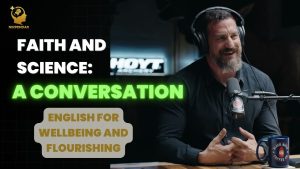
Beginner
Task 1: Share Your Thoughts
After watching the video, tell your partner or a small group:
- What did you learn about Sam?
- What is one thing that he likes to do?
- Do you have a dream like Sam? What is it?
Task 2: Describe a Picture
Imagine a picture of Sam playing the snare drum. Describe what you see in the picture to your partner. Use simple sentences.
- What color is the drum?
- What is Sam wearing?
- How does he look? (e.g., happy, sad)
Task 3: Answer Yes/No Questions
Listen to your teacher or a partner ask you questions about the video. Answer with “Yes” or “No,” and try to add one or two more words.
- Does Sam play the guitar?
- Did his family help him?
- Does he like his friends?
Intermediate
Task 1: Discuss Your Own Philosophy
Sam shares his philosophy for a happy life. Discuss the following questions with a partner:
- What is your philosophy for a happy life?
- Do you agree with Sam’s three points? Why or why not?
- Can you think of a time when you had to make an adjustment to achieve something you wanted?
Task 2: Role-Play an Interview
Imagine you are a reporter interviewing Sam. With a partner, take turns being the reporter and Sam. Use the information from the video to answer the questions.
- Reporter: “Sam, how did you feel when you couldn’t march with the drum?”
- Sam: “I was devastated, but I found a way to make it work.”
- Reporter: “What advice would you give to someone with a big obstacle?”
- Sam: “I would say, ‘keep moving forward’ and ‘don’t waste energy feeling bad.'”
Task 3: Summarize and Share
Work with a group to create a short summary of Sam’s story. Each person in the group should summarize one part of the video. Then, present your summary to the class.
- Part 1: Sam’s dream and his challenge.
- Part 2: How he overcame the challenge.
- Part 3: His philosophy for a happy life.
Advanced
Task 1: Analyze and Debate
Form a small group and discuss the following:
- Analyze Sam’s three-part philosophy. Do you believe these principles are universal, or are they more relevant to his specific situation?
- Debate the quote from Ferris Bueller: “I’m okay with what I ultimately can’t do because there’s so much that I can do.” Is this always a healthy way to think, or can it lead to ignoring important problems?
- Sam says that he doesn’t want people to feel bad for him. Do you think it is possible to admire someone’s bravery without feeling sympathy for them? Explain your reasoning.
Task 2: Deliver a “TED Talk”
Prepare a short “TED Talk” (3-5 minutes) based on a topic from the video. Choose one of the following themes and develop your own ideas, using Sam’s story as a starting point.
- The importance of community and positive influences.
- Overcoming personal obstacles to achieve a goal.
- How our perspectives on life and our ambitions can change over time.
Task 3: Collaborative Problem-Solving
In a group, brainstorm a hypothetical situation where someone faces a significant challenge. Use Sam’s three principles (“I’m okay with what I ultimately can’t do…”, “surround myself with people…”, and “keep moving forward”) to develop a plan of action for this person. Present your solution to the class.
Example Scenario: A young artist loses their eyesight and can no longer paint. How can they still pursue their passion for art?
Beginner
Task 1: Share Your Thoughts
After watching the video, tell your partner or a small group:
- What did you learn about Sam?
- What is one thing that he likes to do?
- Do you have a dream like Sam? What is it?
Task 2: Describe a Picture
Imagine a picture of Sam playing the snare drum. Describe what you see in the picture to your partner. Use simple sentences.
- What color is the drum?
- What is Sam wearing?
- How does he look? (e.g., happy, sad)
Task 3: Answer Yes/No Questions
Listen to your teacher or a partner ask you questions about the video. Answer with “Yes” or “No,” and try to add one or two more words.
- Does Sam play the guitar?
- Did his family help him?
- Does he like his friends?
Intermediate
Task 1: Discuss Your Own Philosophy
Sam shares his philosophy for a happy life. Discuss the following questions with a partner:
- What is your philosophy for a happy life?
- Do you agree with Sam’s three points? Why or why not?
- Can you think of a time when you had to make an adjustment to achieve something you wanted?
Task 2: Role-Play an Interview
Imagine you are a reporter interviewing Sam. With a partner, take turns being the reporter and Sam. Use the information from the video to answer the questions.
- Reporter: “Sam, how did you feel when you couldn’t march with the drum?”
- Sam: “I was devastated, but I found a way to make it work.”
- Reporter: “What advice would you give to someone with a big obstacle?”
- Sam: “I would say, ‘keep moving forward’ and ‘don’t waste energy feeling bad.'”
Task 3: Summarize and Share
Work with a group to create a short summary of Sam’s story. Each person in the group should summarize one part of the video. Then, present your summary to the class.
- Part 1: Sam’s dream and his challenge.
- Part 2: How he overcame the challenge.
- Part 3: His philosophy for a happy life.
Advanced
Task 1: Analyze and Debate
Form a small group and discuss the following:
- Analyze Sam’s three-part philosophy. Do you believe these principles are universal, or are they more relevant to his specific situation?
- Debate the quote from Ferris Bueller: “I’m okay with what I ultimately can’t do because there’s so much that I can do.” Is this always a healthy way to think, or can it lead to ignoring important problems?
- Sam says that he doesn’t want people to feel bad for him. Do you think it is possible to admire someone’s bravery without feeling sympathy for them? Explain your reasoning.
Task 2: Deliver a “TED Talk”
Prepare a short “TED Talk” (3-5 minutes) based on a topic from the video. Choose one of the following themes and develop your own ideas, using Sam’s story as a starting point.
- The importance of community and positive influences.
- Overcoming personal obstacles to achieve a goal.
- How our perspectives on life and our ambitions can change over time.
Task 3: Collaborative Problem-Solving
In a group, brainstorm a hypothetical situation where someone faces a significant challenge. Use Sam’s three principles (“I’m okay with what I ultimately can’t do…”, “surround myself with people…”, and “keep moving forward”) to develop a plan of action for this person. Present your solution to the class.
- Example Scenario: A young artist loses their eyesight and can no longer paint. How can they still pursue their passion for art?
“Nikpendar is an English language teaching website based on wholestic content based instruction method. this task will be given to students and student are supposed to answer these questions directly, in this regard, concerning the fact that these tasks will be put under the video and students are supposed to answer them after watching the video, please replace the word transcript by video, for now on, each time i provided a transcript and asked you to generate tasks for each language skill, make the communication task for three proficiency levels, based on the information that i gave you”
Communication Task: Listening
Here are some tasks for different proficiency levels, based on the provided video, to encourage students to practice their listening skills.
Beginner
Task 1: Matching
Read the sentences about Sam and match the first part of the sentence to the correct second part.
- Sam has a dream to
- He has a disease called
- Sam’s family helped him to
- His philosophy has
- Sam wants to be a
Sentences: a. engineer. b. three aspects. c. play snare drum. d. Progeria. e. make a lighter drum.
Task 2: True or False
Read the sentences below. Write “T” if the sentence is true or “F” if it is false, based on the video.
- Sam weighs 40 pounds.
- Sam’s new drum weighs six pounds.
- Progeria is a very common disease.
- Sam wants people to feel bad for him.
- Sam’s friend is named Francis Collins.
Task 3: Vocabulary and Definitions
Read the following words from the video and match them to their simple definitions.
- devastated:
- apparatus:
- philosophy:
- obstacles:
- ambitions:
Definitions: a. a way of thinking about life. b. goals or dreams for the future. c. very sad or disappointed. d. a piece of equipment. e. problems or difficulties.
Intermediate
Task 1: Read for Specific Details
Read the video and answer the following questions with details from the text.
- What are some of the effects of Progeria that Sam mentions?
- What does Sam do instead of focusing on what he can’t do?
- According to Sam, what is the “bottom line” about family, friends, and community?
- What was Sam’s dream when he was younger, and what has it changed to now?
- What did Sam realize about being brave when he was in the hospital?
Task 2: Find the Quotes
Read the video carefully and find the quotes that match the descriptions below.
- A quote from Sam’s interview on NPR.
- A quote from Ferris Bueller that is part of Sam’s philosophy.
- A quote from Walt Disney that is part of Sam’s philosophy.
- A quote that Sam says his younger self believed about Progeria.
- A quote about never missing a party.
Task 3: Summarize a Paragraph
Choose one of the three aspects of Sam’s philosophy and write a short summary of it in your own words, using information from the video.
- Aspect 1: “I’m okay with what I ultimately can’t do because there’s so much that I can do.”
- Aspect 2: “I surround myself with people that I want to be with.”
- Aspect 3: “Keep moving forward.”
Advanced
Task 1: Analyze Text Structure
Read the video and identify how Sam uses different rhetorical strategies to structure his talk. Answer the following questions:
- How does Sam’s opening anecdote about the snare drum serve to introduce his main points?
- Sam uses direct quotes from other people (Ferris Bueller, Walt Disney). What is the purpose of including these quotes in his talk?
- How does the clip from the documentary “Life According to Sam” function within the context of his speech? What does it add to his message?
Task 2: Critical Reading and Interpretation
Read the video and write a short response to the questions below. Support your answers with specific evidence from the text.
- Sam says his mentality is to “stay in a forward-thinking state of mind.” How does he define this? Does he believe it’s a perfect state of mind, or does he acknowledge the challenges?
- What is the “paradox” that Sam mentions, and how does he avoid it?
- Sam says that being with his friends and family is his “highest point.” Why does he feel this way, even after being in a documentary and on TV?
Task 3: Vocabulary in Context
Read the video and explain the meaning of the following words as they are used in the text.
- logistically (Paragraph 1)
- supersedes (Paragraph 3)
- stinted (Paragraph 2)
- paradox (Paragraph 4)
- falters (Paragraph 5)
- embodies (Paragraph 5)
Beginner
Task 1: Write a Short Biography
Write two or three simple sentences about Sam using the information from the video.
- Sentence 1: Who is Sam?
- Sentence 2: What is his dream?
- Sentence 3: What makes him happy?
Task 2: Finish the Sentence
Read the beginning of each sentence and finish it with your own words. Use the video for ideas.
- Sam’s dream was to play…
- Sam’s philosophy has three parts. The first part is…
- Sam’s family helped him to…
Task 3: Write a Letter to Sam
Write a short letter (2-3 sentences) to Sam. Thank him for his talk and share one thing that you learned from him.
Intermediate
Task 1: Summarize a Section
Choose one of the three parts of Sam’s philosophy and write a short paragraph (3-4 sentences) summarizing it. Use your own words as much as possible.
- Option A: “I’m okay with what I can’t do because there’s so much that I can do.”
- Option B: “I surround myself with people that I want to be with.”
- Option C: “Keep moving forward.”
Task 2: Write a Journal Entry
Imagine you are Sam. Write a short journal entry about how you felt when you were in the hospital. Describe the obstacles you faced and how you used your philosophy to “keep moving forward.”
Task 3: Create a “Can-Do” List
Inspired by Sam’s philosophy, create your own “Can-Do” list. Write a list of five things you are passionate about and can do, and then write a sentence for each explaining why it is important to you.
Advanced
Task 1: Write a Persuasive Essay
Write a short essay (2-3 paragraphs) arguing which of Sam’s three philosophical points is the most important for living a happy life. Use evidence and examples from the video to support your argument.
Task 2: Write a Character Analysis
Write a detailed character analysis of Sam. Discuss his personality traits, motivations, and the central conflict he faces. Explain how his philosophy is a direct result of his experiences. Use specific examples from the video to support your points.
Task 3: Compare and Contrast
Sam mentions that his views on his career path have changed and matured. Write an essay comparing and contrasting his past ambition (to be an engineer) with his current ambition (to go into the field of biology). Discuss how both ambitions align with his overall philosophy of “changing the world.”





